Name SS Meredith Victory Completed 24 July 1945 Construction started 1 May 1945 Length 139 m Beam 19 m | Laid down 1 May 1945 Tonnage 10,658 Launched 23 June 1945 Displacement 13.79 million kg | |
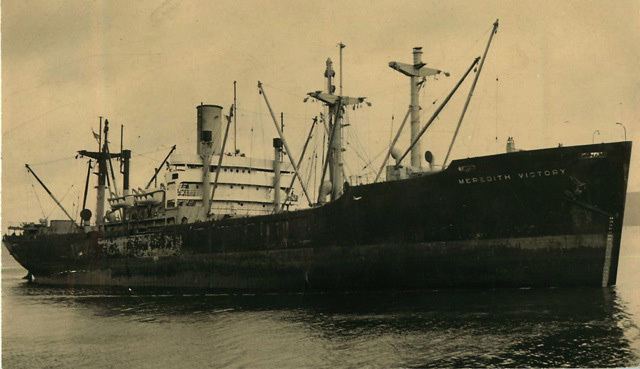 | ||
Fate Broken up and scrapped in China 1993 Builders California Shipbuilding Corporation, Los Angeles | ||
Ss meredith victory
The SS Meredith Victory was a United States Merchant Marine Victory ship, a type of cargo freighter built for World War II. Under the leadership of Captain Leonard LaRue, the Meredith Victory is credited with the largest humanitarian rescue operation by a single ship, evacuating more than 14,000 refugees in a single trip during the Korean War. The vessel has often been described as the "Ship of Miracles" as it was designed to carry only 12 passengers with a 47-person crew.
Contents
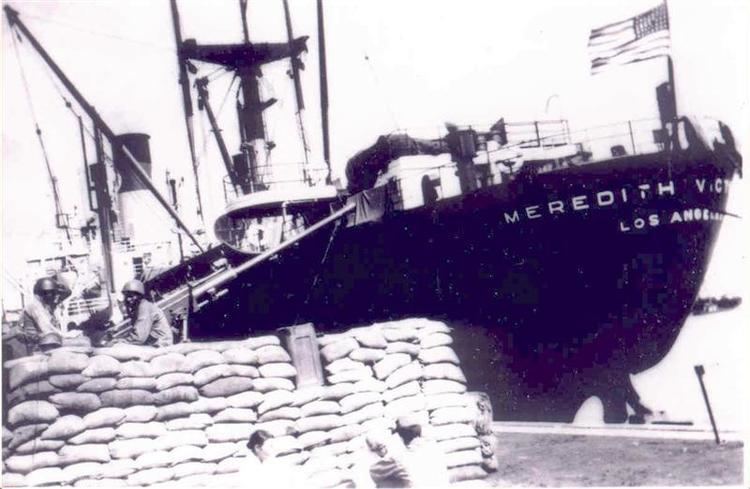
History
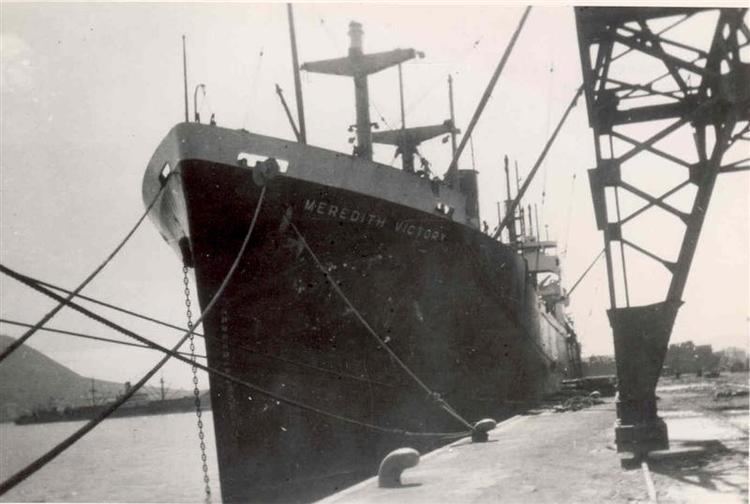
The SS Meredith Victory was named after Meredith College, a small women's college in North Carolina. The ship was built to transport supplies and equipment overseas during World War II. It was then deployed in the Korean War.
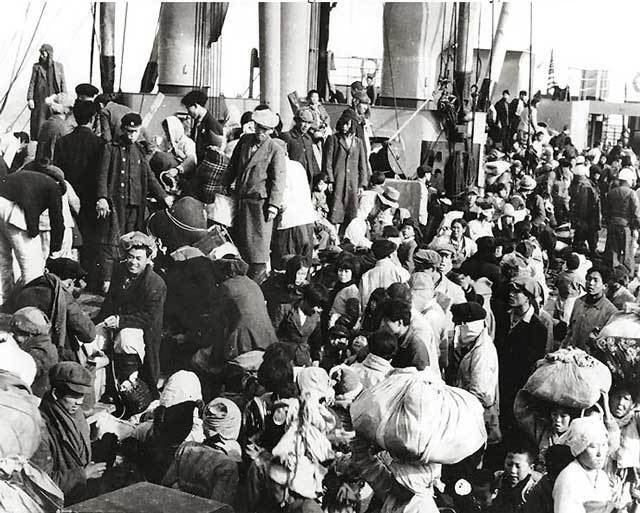
In December 1950, United Nations Command troops were retreating from northeast Korea after a massive assault by Chinese and North Korean forces. Over 100,000 UNC soldiers were to evacuate the city of Hungnam on 193 ships. Nearly the same number of civilians had also gathered at the port, hoping to board these vessels heading to safety in the southern port of Pusan. News of the evacuation had spread in the region and many refugees fleeing from the communists had lined up on the shores seeking rescue.
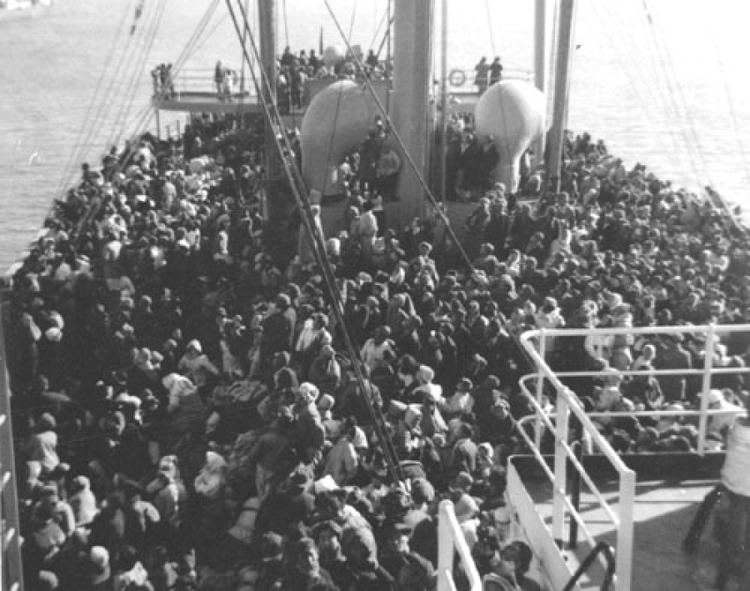
On December 21, Captain Leonard LaRue of the SS Meredith Victory made the decision to unload nearly all weapons and supplies from his ship in order to evacuate as many refugees as possible. Boarding went on from the afternoon of December 22 until the next morning. Using booms and makeshift elevators, the refugees filled the five cargo holds and the entire main deck. Although built to accommodate only 12 passengers, besides the crew and staff, the ship took aboard more than 14,000 Korean civilians fleeing the approaching Communists. The Meredith Victory departed shortly after 11 am on December 23 for Pusan, about 450 sea miles away, as gunfire from UNC ships and explosives destroyed the port in an "enemy-denial-operation" razing. The ship had no escort or means of self-defense.
Years later, LaRue would reflect on that trip:
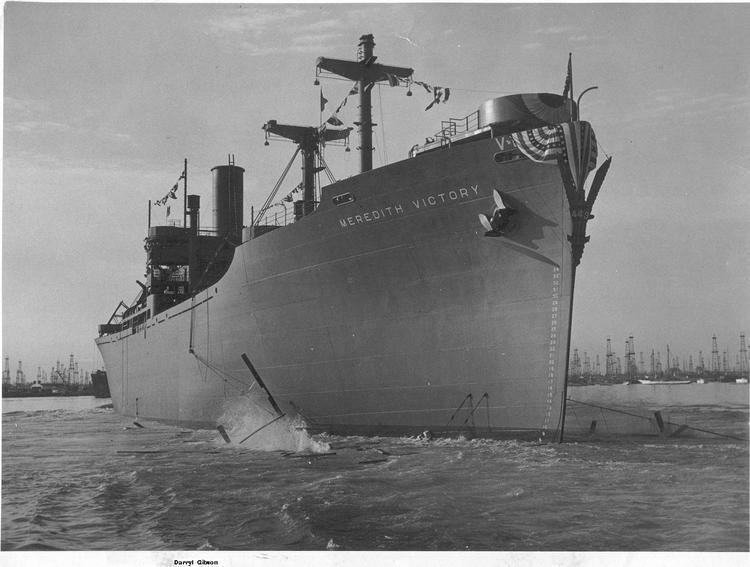
I think often of that voyage. I think of how such a small vessel was able to hold so many persons and surmount endless perils without harm to a soul. And, as I think, the clear, unmistakable message comes to me that on that Christmastide, in the bleak and bitter waters off the shores of Korea, God's own hand was at the helm of my ship.

Despite the fact that the refugees were "packed like sardines in a can" and most had to remain standing up, shoulder-to-shoulder, in freezing weather conditions during the entire voyage, there were no injuries or casualties on board. There was very little food or water, and the people were virtually unable to move. J. Robert Lunney, Staff Officer on the ship and a navy veteran of World War II, stated:
There's no explanation for why the Korean people, as stoic as they are, were able to stand virtually motionless and in silence. We were impressed by the conduct of the refugees, despite their desperate plight. We were touched by it.
First Mate D.S. Savastio, who only had first aid training, delivered five babies during the three-day passage to safety. The ship arrived in Pusan on Christmas Eve, but no one was allowed off except a few wounded and those identified as Communist sympathizers. The Meredith Victory had to travel another 50 miles to Geoje Island before it could debark its passengers on December 26.
Captain LaRue remained in command until the ship was decommissioned in 1952.
After the Korean War, the ship sat in the harbor of Bremerton, Washington, as part of the "mothball fleet" until she was put back in service in 1966 for some minor missions during the Vietnam War. In 1973, she was laid up in Suisun Bay. In 1993, she was towed to China and scrapped.
Awards and distinctions
After the war, the South Korean government honored the crew with the Korean Presidential Unit Citation. The United States Merchant Marine also gave the ship's crew the Meritorious Service Medal, its highest honor.
On August 24, 1960, the SS Meredith Victory was conferred the title of "Gallant Ship" by a special act of the U.S. Congress that was signed by President Dwight D. Eisenhower.
The Department of Transportation declared it "the greatest rescue in the history of mankind". Guinness World Records has described it as "the largest evacuation from land by a single ship".
Depictions
The documentary film Ship of Miracles, describes the events of the rescue.
The SS Meredith Victory is featured prominently in the 2012 historical novel Hope in Hungnam.
The drama film Ode to My Father begins with the Hungnam evacuation in 1950 and shows the evacuation process by the ship in detail.
